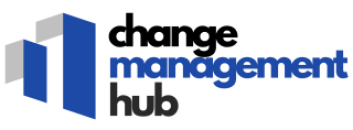-large-teaser.webp)
Understanding Test Environments in Business
Decoding Business Testing Environments
Understanding test environments is a crucial step in the journey of innovation within businesses. These environments serve as platforms for executing tests without impacting the live system. They provide a controlled space where products, services, or processes can be evaluated under simulated conditions, minimizing risk and enhancing development quality. In the digital era, companies are increasingly turning to automation, data, and software testing tools to bolster their business strategies. By integrating testing into the early phases of software development through the shift-left approach, organizations can prevent defects, improve product quality, and reduce time to market. This proactive method is a game-changer when ensuring consistent high-quality deliverables. Using sandboxes and regulatory sandboxes, businesses can safely experiment with products and services, paving the way for new solutions while maintaining compliance with regulations. These environments facilitate innovation and help organizations navigate the complexities of real-time applications, where performance testing becomes paramount. Artificial intelligence and machine learning are further enhancing these environments by enabling automated testing, smart test cases, and predictive analysis, which together streamline continuous delivery and continuous testing processes. Balancing innovation with business needs often requires dynamic environments that can adapt to changing requirements. As highlighted in the change management curve, being prepared for change and understanding its stages is vital for optimizing test environments effectively. By doing so, businesses can ensure that their digital transformations align with their overarching strategies and goals.The Role of Test Environments in Change Management
The Transformative Impact of Testing in Change Management
In the dynamic landscape of change management, testing environments hold a pivotal role in ensuring that transitions are smooth and effective. These environments act as sandboxes, allowing organizations to experiment and innovate without risking disruption to their ongoing operations. By leveraging testing tools and test automation, companies can meticulously assess the functionality and potential impact of new solutions before their full-scale launch.
One of the critical advantages of utilizing test environments in change management is the ability to conduct performance testing and automated testing. These processes enable organizations to simulate real-world scenarios and gauge how new software or products will perform under various conditions. By doing so, businesses can identify potential issues and address them proactively, thus enhancing the overall quality of their products and services.
- Continuous Testing: As part of the continuous delivery process, continuous testing ensures that organizations can adapt rapidly to change requests, maintaining a high level of software quality.
- Security Testing: A critical component, security testing in a test environment helps in safeguarding data integrity and mitigating vulnerabilities.
- Open Source Tools: Leveraging open source software testing tools can minimize costs and provide flexibility in customizing testing processes.
- Automation Platform: Utilizing automation platforms enables businesses to streamline processes and reduce the time involved in testing cycles.
The integration of advanced technologies such as artificial intelligence and machine learning further enriches the development of test scenarios. These technologies facilitate enhanced predictive analysis and the development of more efficient test cases. As organizations embrace digital transformation, utilizing a structured approach to change management that incorporates rigorous testing protocols becomes indispensable.
By embedding testing into the core of their change management strategies, companies not only innovate effectively but also ensure a seamless transition that aligns with regulatory sandboxes and other compliance requirements. This alignment is crucial as it helps balance innovation with the potential risks associated with introducing new products and services to the market.
Case Study: Tech Giants and Their Test Environments
Tech Powerhouses Transforming with Test Environments
In the digital era, tech giants harness the power of test environments to innovate and drive transformation. Testing plays a key role across their diverse range of products and services, as companies strive to develop cutting-edge solutions that respond to market demands. Tech companies use test environments as their unique "regulatory sandboxes." This strategic setup allows them to experiment with software and hardware innovations, refine test cases, and ensure compliance with regulatory standards. By utilizing automation tools and open source platforms, they are able to streamline their software testing and achieve faster time-to-market. Automation is pivotal in these environments, with many firms leveraging machine learning and artificial intelligence. These cutting-edge technologies enable companies to conduct performance testing and security testing efficiently, providing insights that aid in the shift left approach. Test automation platforms offer robust capabilities for continuous delivery and continuous testing, ensuring that quality is embedded from the onset of software development. Test environments also facilitate real-time data analysis, enabling tech businesses to iterate quickly and accurately. Through "strategic rooms," organizations foster an environment of collaboration, where data-driven decisions lead to superior products and services. This iterative process not only enhances product quality but also fuels business innovation and growth. Explore how strategic rooms can drive business success in the digital age through enhanced collaboration and innovation.Retail Industry: Innovating Through Testing
Retail Sector Embracing Testing Innovation
In the fast-paced world of retail, embracing innovative testing environments has become a vital strategy for staying ahead in the competitive market. Companies within this sector increasingly see the value of leveraging sandbox environments, automated testing tools, and test automation platforms. Retail businesses are using these tools to improve product descriptions, optimize customer service solutions, and tailor marketing strategies, resulting in better quality products and services. Comprehensive testing is essential for integrating new digital platforms into customer interfaces, ensuring seamless operations across multiple channels. Retailers are utilizing open source software development platforms for efficiency, allowing them to experiment with new ideas without compromising their production environment. With constant updates in software, regulatory sandboxes are providing them with opportunities to navigate compliance changes without affecting business operations. Key strategies utilized in the retail industry include:- Automation Testing: Streamlining routine tests for efficiency, speed, and consistent product quality.
- Real-Time Data Analysis: Providing instant insights into customer behavior, enabling rapid product and service adjustments.
- Performance Testing of Digital Services: Ensuring robust platforms capable of handling significant traffic during peak shopping periods.
- Software Testing and Development: Allowing quick adaptation to emerging trends by seamlessly integrating machine learning and artificial intelligence insights.
Financial Sector: Navigating Change with Test Environments
Harnessing Regulatory Sandboxes for Seamless Financial Innovations
In the dynamic world of finance, change is both inevitable and necessary. Financial institutions are consistently seeking ways to simplify processes and enhance the quality of their products and services. Test environments play a pivotal role in this transformation, providing a secure space to experiment without jeopardizing existing operations.
The concept of a regulatory sandbox has gained traction in the financial sector. It allows companies to test new products and services in a controlled setting, ensuring compliance without the fear of regulatory backlash. Through sandboxes, financial firms can conduct software testing and implement test automation for various business applications, from machine learning algorithms to artificial intelligence integrations.
Time and data management are crucial in these test environments. With the advancements in test automation, financial entities can perform continuous testing and performance testing more efficiently, reducing the time taken to deliver quality solutions. Test environments serve as development platforms where financial products undergo rigorous security testing to anticipate potential risks and vulnerabilities.
Automation Platforms: The Backbone of Financial Innovation
The financial sector is heavily investing in automation platforms to streamline operations. By shifting to an "automation first" approach, institutions can enhance their digital offerings significantly. Automated testing combined with open source tools allows seamless integration of all testing tools within their environments, ensuring improved accuracy and efficiency.
When it comes to testing new products or services, financial companies often employ the shift left strategy, integrating testing early in the software development life cycle. This practice not only boosts the overall quality but also cuts down on real time errors, delivering more robust and reliable financial services.
The use of sandboxes and these innovative testing practices ensures that businesses remain agile, competitive, and responsive to industry changes, positioning themselves for sustainable growth.
Best Practices for Implementing Test Environments
Effective Strategies for Utilizing Test Environments
Incorporating test environments into your company's change management strategy can significantly improve software quality and business outcomes. To harness the full potential of testing, here are some best practices:- Embrace Automation: Test automation is crucial for improving efficiency and ensuring consistency in test cases. Automated testing allows businesses to achieve real-time insights, reducing the time required for manual intervention and increasing the quality of software products.
- Leverage Regulatory Sandboxes: Regulatory sandboxes provide a secure and controlled environment for testing new products and services. Utilizing these can help navigate the complex regulations often associated with the financial sector, all while promoting innovation and compliance.
- Utilize Open Source Tools: Open source testing tools offer flexibility and reduce costs. These tools are vital for performing comprehensive software testing at scale, particularly in environments where continuous delivery is essential.
- Integrate Machine Learning: By incorporating artificial intelligence and machine learning into test environments, businesses can refine test automation. This enhances predictive analytics and tailors product solutions to meet user demands more accurately.
- Adopt a Shift Left Approach: Early testing in the software development process—known as the shift left strategy—allows teams to identify potential issues sooner, resulting in more robust and reliable products.
- Focus on Performance and Security Testing: Ensure your test environments cover performance testing to handle high user loads and security testing to safeguard user data, ultimately fostering trust in your digital platforms.
- Implement Continuous Testing: A continuous testing methodology supports seamless product development. Continuous feedback loops help identify and resolve issues swiftly, ensuring high-quality outputs.













